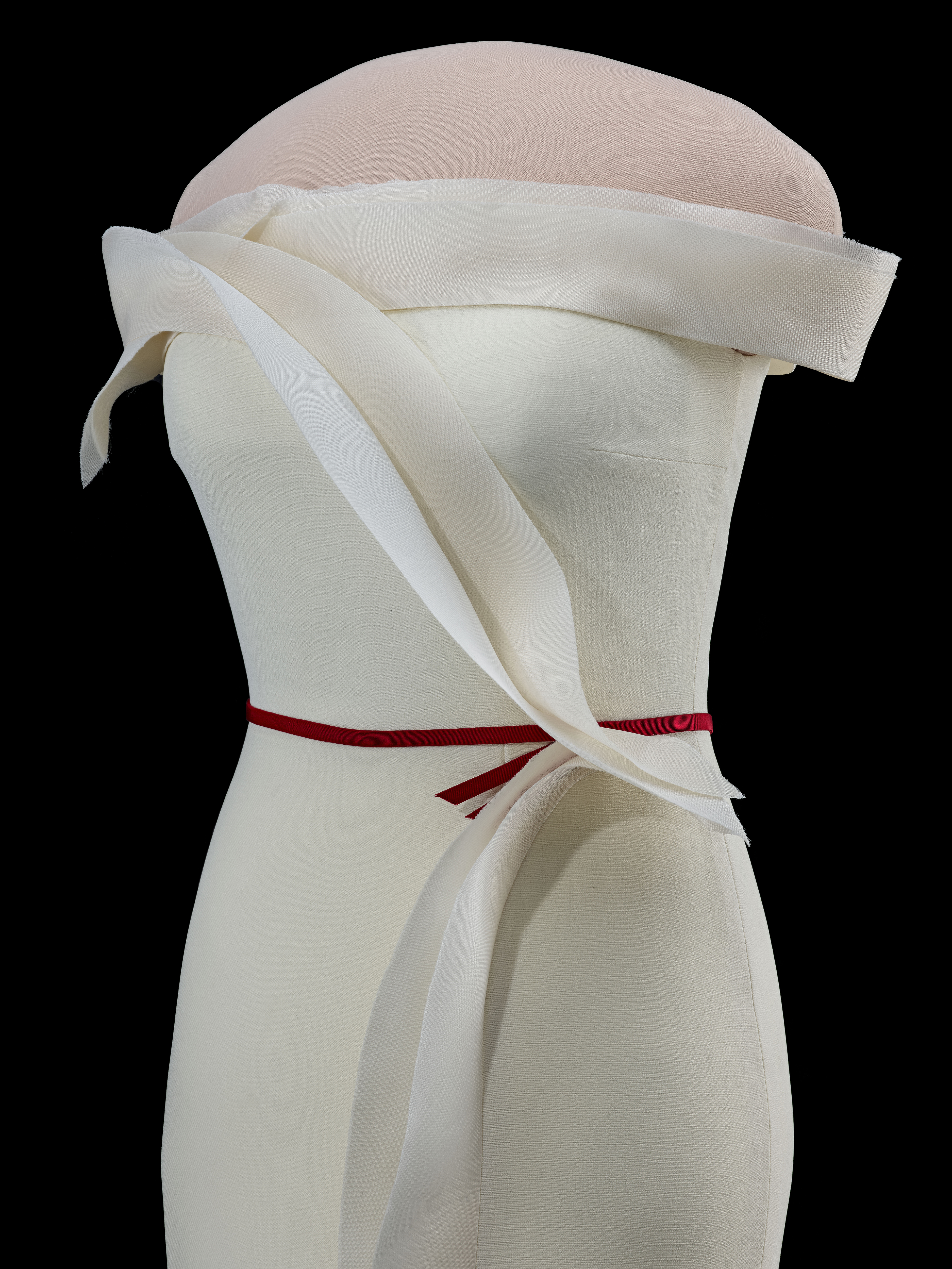Smithsonian Accepts First Lady Melania Trump’s Inaugural Gown
First Lady Melania Trump formally presented the gown she wore to the 2017 inaugural balls to the Smithsonian’s First Ladies Collection, Friday, Oct. 20, during a ceremony at the National Museum of American History. The gown will be displayed in the center of the museum’s popular exhibition, “The First Ladies,” beginning today.
Mrs. Trump’s dress is a vanilla silk crepe off-the-shoulder gown with a slit skirt, ruffled accent trim from neckline to hem and a claret ribbon around the waist designed by Hervé Pierre in collaboration with Mrs. Trump. Pierre is a French American fashion and costume designer.
For decades, the First Ladies Collection has been one of the most popular attractions at the Smithsonian. The original first ladies exhibition of 1914 was the first display at the Smithsonian to prominently feature women. The exhibition itself has changed in size, location, style and narrative several times over the years.
“Today Melania Trump is taking part in a more than century-old tradition,” said John Gray, director of the museum. “The first inaugural gown donated to the Smithsonian was by Helen Taft, and more than 100 years later we are proud to have Melania Trump donate to this extraordinary collection.”
“The First Ladies” exhibition features 26 dresses and more than 160 other objects, ranging from those of Martha Washington to Melania Trump, and includes White House china, personal possessions and other objects from the Smithsonian’s unique collection of first ladies’ materials, established in 1912. Among the dresses displayed in the exhibition are Grace Coolidge’s flapper-style evening gown, Jackie Kennedy’s yellow-silk gown worn to the Kennedy administration’s first state dinner in 1961 and Eleanor Roosevelt’s slate blue crepe gown, which she wore to the 1933 inaugural ball. First ladies are unofficial but critical members of presidential administrations. For more than 200 years, the public has judged their clothes, their parties, their projects and their roles in the White House.
“It is an honor and a privilege to dedicate my inaugural gown to such an iconic exhibit at the National Museum of American History,” said First Lady Melania Trump.
The exhibition examines this in four main sections: “The Fashionable First Lady” explores the public’s interest in the first ladies’ fashions. Only a few first ladies have become fashion icons, inspiring trends and promoting American designers, but all have had their wardrobes scrutinized by the American public, continuing the debate over what is “appropriate” for presidential style.
“The Nation’s Hostess” looks at the role that the First Lady has played for the nation and the presidential administrations. Each reception or dinner is an opportunity for the First Lady to help build America’s international relationships, win political friends and public support for the President, or further his administration’s legislative agenda. Each First Lady puts her own stamp on presidential hospitality.
“Inauguration and Opportunities” looks at the inauguration of a President as a time of optimism and new beginnings. In addition to attending ceremonies and balls, incoming first ladies often announce the agendas and special projects they intend to pursue. Some projects are ambitious. Some are traditional. Some may be controversial.
“Changing Times, Changing First Ladies” highlights Dolley Madison, Mary Lincoln, Edith Roosevelt and Lady Bird Johnson, who all fashioned their own ways of handling the White House, families, parties and politics. Through different times and circumstances, they crafted significant roles for themselves that they believed would allow them to best serve the President and the country.
Through incomparable collections, rigorous research and dynamic public outreach, the National Museum of American History explores the infinite richness and complexity of American history. It helps people understand the past in order to make sense of the present and shape a more humane future. The museum is located on Constitution Avenue N.W., between 12th and 14th Streets, and is open daily from 10 a.m. to 5:30 p.m. (closed Dec. 25). Admission is free. For more information, visit http://americanhistory.si.edu. For Smithsonian information, the public may call (202) 633-1000.
# # #
SI-572-2017
Laura Duff
202-633-3129

